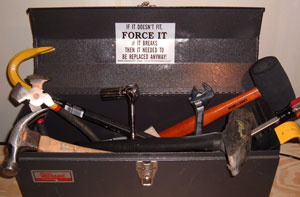
We wouldn't allow our toolbox to be a jumble of useless odds and ends. Why should our skillset be treated differently?
One of the more popular, though misguided, sayings in combatives training refers to a new technique as “just another tool for your toolbox.” It’s one of those comforting industry truisms that makes a good soundbite without actually explaining anything. As teaching goes, it’s really no different than “because I say so.” The problem with the skillset = toolbox analogy is that far too often we think of it as a bottomless reservoir somewhere in our subconscious. Yeah, we’ve all got nebulous psychological toolboxes somewhere brimming with a wide array of deadly skills. Gee whiz, isn’t that cool.
Take a moment to think about your real toolbox, the physical box of tools you grab when something around the house or vehicle needs repair. It’s not a massive crate filled with every tool you’ve ever owned; it’s a small box of the tools you know will work for the majority of jobs at hand. The 37-socket octopus-motif impact driver your kids got you for Father’s Day isn’t in there, and neither is the “As Seen on TV” left-handed wonder wrench. You might have those interesting and occasionally useful items in a corner of the garage, but they’re not in the toolbox. The toolbox is for real work. We need to be as clinical and ruthless about deciding what goes into our skillset toolbox as we are with our real one.
Below are five questions that I’ve found to be very effective for evaluating new techniques and assessing whether to integrate them into regular training. While these are primarily aimed at unarmed techniques, they can be applied to armed techniques and tactics just as effectively.
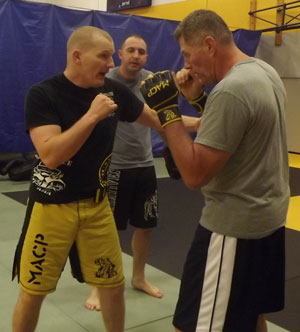
Personal defense is a life-long pursuit. Constantly re-evaluating techniques as you mature will keep your skillset best aligned with your physical abilities.
Is it functional for my body type?
The way an individual is built has a direct effect on what techniques work for them. Physical strength, stature and degree of athleticism are all important considerations when evaluating a technique for your own use. Remember, if you have to use a technique to defend yourself, the instructor will not be there to help you. You must be able to perform the actions within the limitations of your own body.
This principle is also useful for re-evaluating techniques you have trained in the past. What you couldn’t do before you got your diet right and lost 30 pounds may now be an excellent option. What you used to do in your twenties may need to be re-examined as you mature into your later years. Be honest with yourself about the state of your own fitness when evaluating new techniques, and let it be a motivator to maintain your physical fitness.
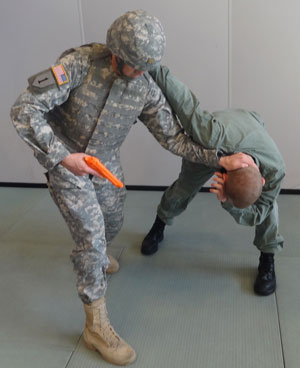
If your job requires certain equipment, train with that in mind. Train for likely attacks with tools you are likely to have.
Does it address an attack that is likely to occur?
Just as we all have different bodies, we also have different walks of life. The threats faced by a soldier differ from those faced by a police officer, which differ from those of a civilian. Violence can happen anywhere, but gender, location and line of work all have an effect on what type of attacks you are likely to face. If you’re not sure what risks are probable in your area, contacting local law enforcement and looking at area crime statistics can provide insight.
Training time is precious. If you’re going to take time away from your work, family and other interests to practice a technique, it needs to be a technique that you are actually likely to need. If a counter only works when an attacker grabs “just so,” or if it addresses an obscure set of circumstances that are unlikely for your area, you should take that with a grain of salt. This isn’t to say that those techniques are not worth knowing about in an academic sense, or that the more esoteric qualities of the martial arts have to be ignored. Just don’t allow them to consume training time dedicated to realistic personal defense. Academic knowledge is interesting and informative, but practical skill saves lives.
Will it integrate with my other tools?
It’s important to assess how a given technique or tactic will mesh with your existing skillset, with the natural reactions of your body, and with any weapons you may be carrying. If armed, does a technique allow or deny access to the weapon for either yourself or your attacker? Does the technique rely on gross motor skills your body can perform under stress? If your line of work requires you to dress a certain way or carry certain gear, are you training with that in mind? The continual goal of any fighter is to be as complete and well-rounded as possible. This includes all of your weapons, from the mind and body to the knife and gun. New techniques should complement your existing training or fill holes in it. Anything else is deadwood.
Can it be trained at full speed?
Violence happens fast, so your response must be fast, too. While I’m not suggesting you need to be able to practice a new technique at full speed immediately, you should be able to work your way up to that point within, say, the first 100 to 200 reps. Bear in mind that the ability to practice at full speed is not mastery. It’s just a step along the way. If a new technique can’t be practiced at combat speeds smoothly and effectively, then it’s probably destined for the scrap heap. Full-speed repetitions of techniques are critical to making them work in the real world. If you can’t get it to work in 100 attempts, do you really want to rely on it when you’ll get only one?
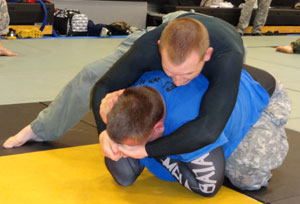
In unarmed attacks, your opponent will often be larger or stronger, so avoid techniques that over-rely on brute force and superior strength.
Will it work under pressure?
This is the deal breaker, the linchpin question that can make the answers to any of the others irrelevant: Can I do it under stress? After you’ve trained your reps and practiced for hours, the technique still doesn’t have the green light. Working with a semi-cooperative partner is an important stepping stone in the training process, but sooner or later you have to try it with a partner who does not want that attempt to succeed. Remember, your attacker has a say in the fight too. After all, he (hopefully) started it. This is the step where being honest with yourself can sting the most, because by now you’ve invested substantial time and effort into the new technique. But it can also be the most rewarding. Pressure testing is the final crucial step in deciding whether a new technique or tactic is integrated into your skillset or cast aside.
Conclusions
New techniques are a wonderful thing. They are exciting and can add to our ability to defend ourselves and others. The learning process can be both satisfying and a ton of fun. Learning new material also reminds us that we don’t know it all. There is always more to learn. However, our passion for new knowledge and skills must be tempered by a willingness to systematically, even mercilessly, evaluate new techniques before integrating them into our overall practice regimen.
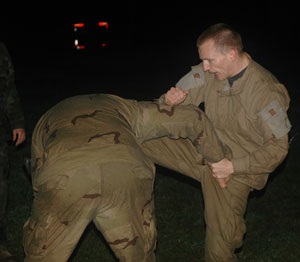
Share tips, start a discussion or ask other students a question. If you have a question for the instructor, please click here.
Already a member? Sign in
No Responses to “Evaluating New Techniques”